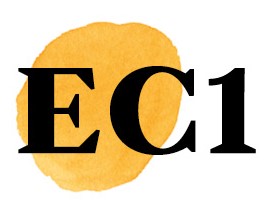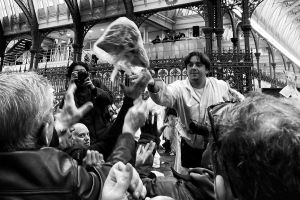Dickens used London to fuel his imagination, including a particular street in EC1…
By Jordan Evans-Hill

London! – that great place! – nobody, not even Mr Bumble – could ever find him there! He has often heard the old men in the workhouse, too, say that no lad of spirit need want in London; and that there were ways of living in that vast city, which those who had been bred up in country parts had no idea of.
London! It is still an incredible place, almost two centuries after Charles Dickens first wrote those words. For Dickens, London was his ‘magic lantern.’ It’s true that at times he found it too much – too much noise, too much dirt, too much filth. But once away from the grime of the big city, he found he struggled to write without it. That’s probably how most Londoners feel today. How often we all moan about the capital; the tube, the train, the hustle and bustle. Yet take us away for just a few days, and we’re hankering to get back again.
Dickens used London to fuel his imagination. He wandered the winding streets, even at night, making notes on the people and the places he encountered. His stories are full of the small details which smack of the real and the intimate. Remember the little orphan, Oliver Twist, asking the beadle every quarter of a mile, “Are we there yet?”
It is Oliver Twist in particular, which is perhaps Dickens’s most well-loved novel. It’s got it all; love, betrayal, hope and murder. It is filled with some of the most memorable characters ever created in English literature. It was written in the study at 48 Doughty Street – now home to the Charles Dickens Museum – and perhaps more than any other Dickens novel, it is intimately connected with the London that Dickens encountered while living here.
Dickens sought out the less ‘respectable’ parts of London to explore. Think of his description as Oliver follows the Artful Dodger to the home of Fagin:
A dirtier or more wretched place he had never seen. The street was very narrow and muddy, and the air was impregnated with filthy odurs. There were a good many small shops; but the only stock in trade seemed to be heaps of children, who, even at that time of night, were crawling in and out of doors, or screaming from the inside. The sole places that seemed to prosper amid the general blight of the place were the public-houses … drunken men and women were positively wallowing in filth; and from several doorways, great ill-looking fellows were cautiously emerging, bound, to all appearance, upon no very well-disposed or harmless errands.
This passage describes Saffron Hill, a real street in London less than 10 minutes’ walk from Dickens’s own front door. This scene is presented as part of a work of fiction, but it is very likely to be Dickens’s own, very real, perception of what he saw as he wandered through Saffron Hill late at night.
Could Charles Dickens have written Oliver Twist had he not lived at 48 Doughty Street? Of course he could. His mind was full of creative genius. But would his story have become the book it did? Perhaps not. His proximity to real orphaned children, to the workhouse, to Saffron Hill and the poverty that permeated it, all helped shape his writing. 48 Doughty Street may not have created the whole tale of Oliver Twist, but it certainly helped inspire a story that is more than a book; it is a literary masterpiece. As Dickens himself summarised:
I have perhaps the best subject I ever thought of… I have thrown my whole heart and soul into Oliver Twist…
This is an abridged version of the original blog piece which you can find on the Charles Dickens Museum website.









